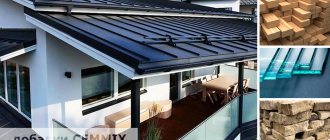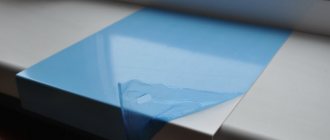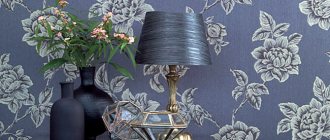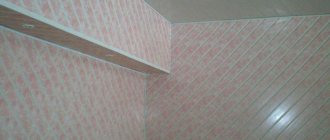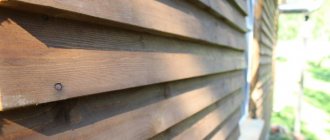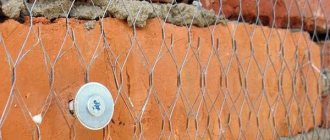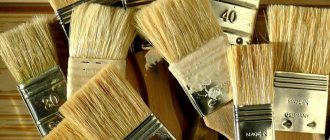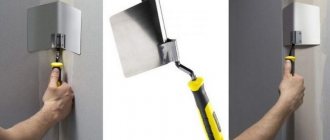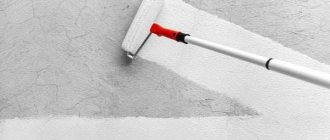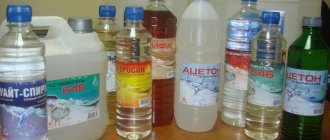The beauty of the facade is in the overall picture, which consists of details that are invisible at first glance. But there are no unimportant little things! And finishing the corners of the house occupies a special place among them. Here we need a well-thought-out system of elements that will decorate the house, combine with the main decoration and at the same time strengthen the most vulnerable places of the corner joints of the panels.
To ensure that a house finished with siding has an aesthetically complete look, we released the Alta-Decor system of finishing elements. This collection also includes external corners.
Decorative finishing of corners of various facades
Facade decor is an important part of the design of country housing; its role is to give the house a finished look. Finishing the corners of the house outside is one of the main types of work; The finishing method often depends on the type of material used for wall cladding.
Corners are often processed using brick, stone, tiles, and plaster. Finishing of external corners of wet facades (plaster) is carried out using special perforated plaster elements - PVC corner facade profiles equipped with reinforcing mesh. Such corners play an important role in strengthening the “wet type” facade.
If your house is covered with siding (or another type of panel), the task of finishing the corners of the facade is simplified. The set of panels includes special additional (shaped) elements, which, as a rule, are made of galvanized steel with a polymer coating. To cover the outer corners of the facade, a corner (outer corner) is intended, which simultaneously performs several functions:
- Decorative . Design of panel joints in the chosen style.
Finishing the plaster facade Source kosbudminsk.by
- Working . The corners serve as guides for the siding and secure the panels. The parts are mounted on the sheathing using a level.
- Protective . The ends of the panels are protected from random mechanical loads.
It is believed that wooden walls do not require external decoration of corners, since the ends are quite strong and have an attractive natural appearance. At the same time, it is the end parts that are the most vulnerable areas, primarily suffering from atmospheric moisture. To protect the corners of a wooden structure, they are subjected to the following operations:
- Grinding . It is used to clean the surface of a timber or log from bark residues and give the cuts a well-groomed appearance. The operation also removes small surface cracks, thereby increasing the strength of the material.
- Protection . To prevent the walls from falling into disrepair ahead of time, three types of protection are used - antiseptic (against mold and parasites), moisture- and fire-resistant. The choice of options is huge; you can use liquid impregnations, spray bottles, and special sealants.
Finishing the corners of a wooden facade Source roomester.ru
- Finishing . It is not always necessary: if the log house is made without residue (with closed corners), only grinding and treatment with protective compounds will be required. Sometimes they try to emphasize the corners and deliberately leave them open. In other cases, decorative corner covers are made (most often they are made of wood-like plastic). Such overlays not only decorate and protect, but also provide additional insulation.
Why cladding a brick house
A new brick house, built in accordance with all building codes and regulations, does not need to be clad. If the walls are lined with decorative brickwork, thermal insulation and ventilation are provided, then there is no need to decorate them from the outside.
Exterior finishing of a brick house is required if:
- there is no heat;
- high humidity has a bad effect on the condition of bricks;
- the exterior of the house does not correspond to the intended project;
- very shabby.
Next, we will consider what types of external decorative finishing can be done for cladding a brick house, and we will also describe the nuances of finishing work.
Decorating the corners of the facade with rustication
The classic way to finish the corners of a house is rusticated stone (rust). Rusticism as a design technique became widespread during the time of Peter the Great. Then not only the corners of building facades were finished, but also door or window openings, as well as the basement. In modern private construction, various decorative elements are also used, including interfloor belts, moldings and cornices, window locks and brackets.
Stone rustication Source designcapital.ru
See also: Catalog of companies that specialize in designing country houses.
However, the most famous decoration technique remains natural rusticated stone, thanks to which the structure acquires an exquisitely aristocratic appearance. Rustic corners made of natural stone have the following advantages:
- Physical properties . They are distinguished by mechanical strength and resistance to environmental factors (frost, rain, sun).
- Quality . Retains original properties for decades.
- External attractiveness . Finishing with natural stone always looks decent, retains its texture and richness of colors throughout its entire service life.
Stone for cladding walls and corners of a house is chosen based on color, texture and other qualities. Common options include the following types of stone:
- Sandstone, shell rock, limestone . The breeds are popular due to their budget cost, moisture resistance and good density; sandstone remains the leader, due to its special frost resistance. When choosing, a wide color range of materials, from bright white to dark brown, is also important. The rustic finish with these stones gives the house an ancient, majestic look.
Clear appearance of a rusticated facade Source penoprofil.ru
- Dolomite and travertine . Rusts made from these types of stone have premium quality, excellent density, and a special texture. The color palette, which depends on the place where the stone is mined, is particularly sophisticated and allows you to choose rarer shades - creamy beige, greenish, sea green. The high strength and wear resistance of dolomite allows it to be used for cladding the base.
- Granite and marble . The most durable, durable and expensive materials. They rarely cover the entire facade, but are often used to decorate corners, window openings and entrance areas.
Regardless of what architectural style the country house belongs to, and what stone was preferred, the natural beauty and texture of the material will be a harmonious addition and decoration of the facade.
Bossage with bevel Source penoprofil.ru
A natural stone
The use of stone for external walls will give the house a strict appearance. This treatment of external walls demonstrates the success and prosperity of the owners of the house. The advantages of stone cladding include:
- strength of the treated facade;
- long service life of the coating;
- attractive appearance.
Also keep in mind that due to its properties, the stone will do an excellent job of protecting the surface from external moisture. Stone can be used both for complete finishing and for partial finishing, for example, for the base or corners of a building. You can choose two types of building stone: processed or untreated. The latter option looks more attractive, but working with it is a little more difficult.
Quite often, granite is used for external walls; this option also has a decorative effect. Marble is also used, which has a wide variety of shades. The price is really quite high, so not everyone can afford this luxury.
Another disadvantage is the large weight of natural building materials. However, there is a stone called travertine, it weighs much less, but has good sound and heat insulation effects. The finishing method using travertine is significantly simplified, and the price is not so high.
Keep in mind that decorating external walls with stone is in any case a rather expensive and difficult task that will require special skills and knowledge from the worker. Therefore, we recommend paying careful attention to other cladding methods.
Easy solution for rusting
Today, decorative finishing of the corners of the house outside is done using lightweight materials. The most budget option offered by manufacturers is products made of polystyrene foam with a protective coating. The material reliably imitates natural stone and stucco, and is easy to process and maintain. When choosing this material, you should take into account not only its advantages, but also remember the disadvantages, including:
- Fragility . The material is a mesh-reinforced foam plastic that does not tolerate frost well, readily burns with the release of toxic substances, and is destroyed in the presence of certain technical fluids.
- Low mechanical resistance . Foam parts are easily crushed, which is why facade corners can have a very unaesthetic appearance after a season or two thanks to sloppy (or too curious) offspring.
Polyurethane rust is designed for low temperatures Source edecor.by
A much more promising option are products made from high-density polyurethane. Light facade decor (including rustication), which adorns most European and American buildings, is made from polyurethane. Rustic stones (another name is bossage) made from this material are not much more expensive than analogues made from expanded polystyrene, but have other properties:
- High density and durability.
- Frost resistance.
- Easy installation (you don't have to drill into the corner of the house).
- Practicality . Unlike stone rustications, polystyrene foam products can be removed painlessly. You can change the style of the facade without major investments.
Roof overhang decor
The roof overhang is decorated with a large or small, complex or simple, single or composite under-roof cornice. An additional dividing strip on the facade may run slightly lower, allowing for color zoning of the facade of the house. The corner of the house itself is designed in many ways in order to visually reduce or increase the height of the structure. Rusts, pilasters, combined options - these are the main types of facade decor for the corner of a house. A separate and most important part of decorating the exterior walls of a house is the façade window decoration.
Rust made of polymer concrete
The material for facade decoration can be polymer concrete (artificial stone, architectural concrete). This type of concrete contains synthetic additives (for example, acrylic) and finely ground natural filler, crushed quartz or granite chips. Polymer concrete has the following set of characteristics:
- Durability . High strength, moisture resistance and resistance to low temperatures. The service life reaches 25 years or more.
- Light weight . The elements are even mounted on a ventilated façade.
- Variety . Decor of any shape and appearance is made from polymer concrete. The finishing of the corners can look like natural stone, smooth or torn brick, or a plastered surface.
The disadvantages include the inability of polymer concrete products to withstand high load-bearing loads, which is explained by the large volume of filler in the composition; rusticated polymer concrete stones cannot serve as a supporting element. Another feature of the material is that it is impossible to make small parts from it, which, however, is not critical for finishing corners.
Rust made of polymer concrete Source 2gis.ru
Sandwich panels: warm and beautiful
Installation of thermal panels is permissible on walls with unevenness of no more than 5 cm.
Exterior finishing of brick with sandwich panels appeared on the construction services market quite a long time ago and has managed to establish itself. Each panel consists of two layers: internal insulation and external aesthetic. It is important to choose quality products from angar272.kz.
Horizontal lines are installed on the walls of the house. If the surface has deviations of up to 5 cm, then moisture-resistant plywood or any other moisture-resistant material is suitable for leveling it. Wall unevenness of more than 5 cm is eliminated using lathing. The panels are attached to the house using self-tapping screws and to each other using a tongue-and-groove principle.
Installation begins from the corner of the building. Laying is best done from right to left. After each level, check the horizon. The final stage of work is grouting the joints. Attention: purchase cement-based grout. Sandwich panels can be used at any time of the year. As a rule, they are used for low-rise buildings.
Features of facing corners of the facade
Located at the corners of the building, rusticated stones give it a clear geometric shape. Installation of rusticated decor is subject to the following rules:
- Subsequence . Direct, checkerboard and alternating laying methods are used. In some cases, rusticated stone finishing can have a smooth, fantasy shape.
- Location . Corner rusticated panels without a chamfer (bevel) on the surface can be laid without a gap; this makes it possible to simplify and speed up facade work. Corner rustication with a chamfer can be installed either with or without a gap, at the customer’s choice. The gaps between elements can be from 30 to 60 mm.
- Fastening . Rusted stone is attached in different ways, from using special glue to organizing powerful fastenings for rusticated natural stone.
Facade decor made from modern materials Source toppendecor.ru
Price list
| Title of works | Price |
| Natural stone or artificial stone on an adhesive mixture: | |
| Steel mesh fastener | 190 rub/m2 |
| Leveling the surface using beacons | 330 rub/m2 |
| Padding | 75 RUR/m2 |
| Stone cladding | 1300 rub/m2 |
| Grouting of seams, rub./m.m. | 300 rub/m2 |
| Based on the hinged ventilation façade technology: | |
| Installation of a metal frame | 500 rub/m2 |
| Facing fasteners: | |
| — Fiber cement panels | 600 rub/m2 |
| — Porcelain tiles | 720 RUR/m2 |
| — Metal cassettes | 720 RUR/m2 |
| — Profiled sheet | 600 rub/m2 |
| — Metal siding | 900 rub/m2 |
| — Composite aluminum cassettes | 720 RUR/m2 |
| — Clinker tiles | 4200 rub/m2 |
| — Planken | 900 rub/m2 |
| — Aluminum cassettes | 720 RUR/m2 |
| — Natural stone | 900 rub/m2 |
| — Terracotta panels | 900 rub/m2 |
| — HPL panels | 720 RUR/m2 |
| — Lamels | 900 rub/m2 |
| - finishing the house with facade panels | 700 rub/m2 |
| Installation of parapet ebb on the subsystem | 900 rub/m2 |
| Installation of slopes and ebbs | 400 r/m. |
Modern methods of finishing corners
Working with corners (especially if stone is used) requires accuracy and specific skills and experience for the performer. In modern private construction, even stone rustications serve only for decoration. However, they make the facade heavier and require reinforced fastening, and they cannot be replaced.
The task is greatly simplified when using lightweight panels; For this purpose, a corner finishing system has been developed, the installation of which is carried out according to the principle of siding and facade panels. To install panels on corners, it is better to use metal lathing, since in the corners the mechanical load is always stronger than on the plane of the walls. Finishing the corners goes through the following stages:
- Installation of the fastening base-profile using self-tapping screws.
- Rustic panels are applied to the base : each part is inserted into a groove and snapped into place.
- Subtleties of installation . The order of installation of rusticated panels (sequence and symmetry of arrangement) must be thought out in advance; You will not be able to rearrange the elements, since the fastening mechanism is designed for one-time use.
Emphasis on color Source m.azh.kz
- There remains a gap between the rustication and the sheathing , where the façade panels (or siding) are tucked in. If the facade material is thicker than the gap, a mounting shelf is used for fastening.
- This finishing system can also be used with plastered facades ; in this case, the mounting flange is cut off from the profile.
Installation of basement siding on the frame
Finishing the facade of a house with PVC panels has its own differences. The sheathing used to install basement siding must be “checked”, since the facing material itself has a square or rectangular shape. Bars or profiles are placed at the joints of PVC plates.
Be sure to use the starting and j-profile. They will help cover the sections of the facing material and provide additional support for it. There are special corner panels for decorating corners. Moreover, it looks beautiful when they have a different color from the wall decoration.
Installation of PVC panels on a frame base is carried out in several stages:
- Surface preparation. The old finish is removed. Cracks, chips, and wall defects are repaired with cement mortar. If a seam has fallen out between the bricks in the masonry, it must be repaired. The surface is leveled.
- Installation of sheathing. A wooden sheathing made of timber or profiles is attached to the wall. Self-tapping screws or dowels are used for fixation. First, horizontal strips are installed. The pitch should be equal to the height of the panel. It is important that the joint of the facing panels falls in the middle of the profile. The pitch of the vertical slats is calculated in the same way. They are installed in the space between the horizontal ones or on top if a ventilation gap is installed.
- Installation of insulation. Mineral wool is used as insulation in frame structures. It fits tightly inside the lathing frame. The wall is first primed, and in the case of wooden houses, it is also treated with fire retardants and antiseptic compounds that prevent the development of fungus or mold on the surface. Be sure to apply a fungicidal solution. It will protect the tree from insects and rodents. The top of the insulation is covered with a vapor-permeable membrane.
- Installation of cladding.
A starting profile is installed on the lower horizontal bar. It is nailed or fixed with self-tapping screws. The first row of PVC panels is inserted into the profile. They are leveled and attached to the sheathing using nails. The second panel is connected to the previous one via a lock. If the panel has to be cut, for example, when facing the corner of a building, then a j-profile is placed in these places.
For greater rigidity of the cladding, two vertical jumpers can be installed on one piece of basement siding at once. This is especially true when the PVC panel has a length of more than 1000 mm.
What happens if you don't close the corners
If you ignore the stage of insulating the corners of the log house, in addition to the lack of comfort during your stay, there is guaranteed to be a distortion of the shape of the structure, which will become askew over time, dampness and elements of rotting wood will appear.
What happens if you don't close the corners from the outside? External insulation allows you to more effectively maintain comfort in the house compared to internal insulation, therefore it is more important. If you cut a corner of logs or beams without sufficient experience, then there is a high probability of defects appearing after construction, in particular large gaps during shrinkage. The situation is corrected with the help of wedges. They are cut from the same type of wood as the log house. Errors in sealing corners will also lead to serious problems. For external insulation, you cannot use polyurethane foam, which will accumulate moisture over time and cause dampness in the wood. When choosing sealants, you should not use silicone or acrylic types due to the high likelihood of peeling or cracking. You should pay close attention to the internal and especially external corners, since they become the paths for cold penetration if the insulation is improper. Insulation of a wooden house using Warm seam technology
In order to understand which materials are best used to make a staircase in your home, you can study in advance the interior decoration projects of wooden houses, photos of which are quite accessible. And based on them, decide what is best to use for the task at hand.
Fake diamond
Choosing an artificial material is a good option for treating exterior walls. It doesn't even require any preliminary preparation. This stone has almost the same characteristics as the real material.
This finishing method allows you to give the building a pleasant appearance and requires only minimal costs. Keep in mind that the texture of such a stone can be either smooth or embossed, so the choice is yours. There is also a fairly large variation in shades, which will allow you to provide your home with a unique design.
Single layer
Made from polyvinyl chloride. Single-layer panels imitate brick or stone masonry, tiles made from expensive varieties of basalt and granite.
Thanks to modern equipment, the drawing looks natural. It is almost impossible to distinguish artificial material from natural material from a distance of several meters.
PVC panels are made with fillers that significantly increase the performance characteristics of the material.
Artificial cladding is very strong and durable. The panels are made from non-flammable material and practically do not lose their shape when exposed to sunlight.
PVC wall panels can be mounted either on a clean base or on a frame with insulation.
